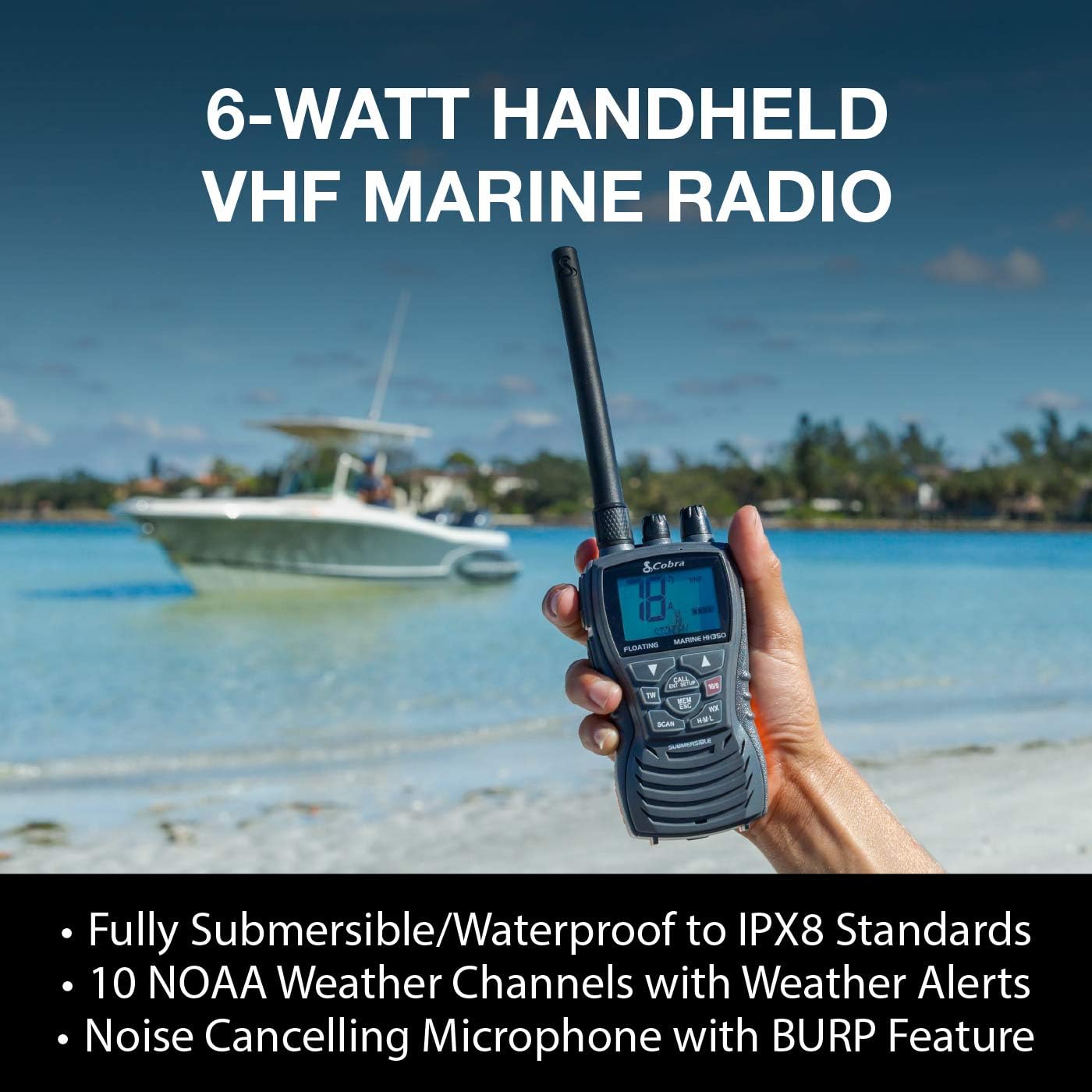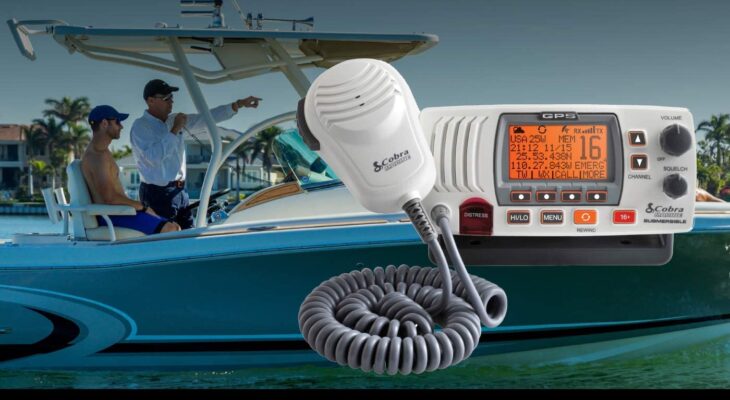Last updated on April 22nd, 2021
A VHF radio is a crucial piece of safety equipment for a powerboat. Learning how to use a VHF radio in a boat is essential because it can save you and your passengers when you are in the middle of the water.
Among many dispensable boat accessories, VHF radio is the handy one that provides weather forecasts quite accurately. Moreover, during an emergency, it is the only way to seek assistance for things.
So, it is significantly important to learn the protocol of using a VHF radio.
Let’s figure it out.
What is a “Marine VHF Radio”?
The abbreviation of VHF is “Very High Frequency.”
Marine VHF radios are efficient in transferring and receiving messages which means they perform as a 2-way communicator. However, it is a very beneficial device in sending emergency signals to other boats, coast guards, or ships in the periphery. Moreover, a few advanced VHF radio models are available in the market that can to make calls through specific marine operators.

However, this crucial device is categorized into 2 categories: non-portable and portable. Both types are unique in their characteristics and features.
Portable VHF radios are battery-powered to enable power transmission and come with a waterproof covering.
While the coverings of the non-portable or fixed VHF radio are high, power transmission and the energy source are higher than portable models. Additionally, operational facilities are more feasible in non-portable VHF radio.
As stated earlier, both types are unique and offer pros and cons. The best VHF marine radio handheld will allow you to use it when the power is out. They are shock-proof and weather-proof.
While the fixed marine VHF radios can cover a longer distance, some models can be used as a loud hailer. Since they are battery-powered, they last long until the boat power is available.
Although most vessels have an installed VHF radio, it would be best to keep both types to avoid unwanted situations.
Do I Need a License?
Without an FCC ship station license, recreational boaters can use VHF marine radio, marine radar, or EPIRB. In 1996, this permission was given by the Telecommunications Act. On the other hand, an FCC ship station license is necessary to carry by the boaters of international cruise ships. Also, the boaters need to carry a marine satellite terminal or an HF single sideband radiotelephone.
Moreover, an FCC ship station license is mandatory for those who are not discharged according to the 1996 Telecommunications Act. The Local FCC Field Office provides the application for a Ship Station License, and it is made on FCC Form 605.
This application needs to be written to the FCC, P.O. Box 1050, Gettysburg PA 17326. Moreover, a number is also available to call at the FCC Forms Distribution Center (202)418-3676. Furthermore, you can use the toll-free number too: (800) 418-FORM. Most Marine Electric Dealers can also provide you the Form.
VHF Radios can be used immediately after the license is applied. Remember, you can’t transfer the license if you sell the boat. Even if the VHF radio is transferred to another marine, license transfer is prohibited.
Which Channels Should I Use?
Call for assistance by tuning your VHF radio to Channel 16 or 9. Ensure moving to a “working channel” once you receive a message from another vessel. Channel 16 is such a type of channel designed as “non-commercial.”
Basic Steps for Using a VHF Radio
In order to learn how to use a VHF radio on a boat, the very first thing that you will need to do is, turn the VHF radio on, and then a channel needs to be picked. Tune-up the squelch to a point where white noise is unavailable and start talking once you identify the point.
First, we will be sharing the steps of using a VHF radio on a boat.
Step 01: Fine-Tuning
Tune the VHF radio to Channel 16.
Step 02: Call “Mayday”
Make a call saying, “mayday, mayday, mayday.” Calling “Mayday” 3 times is a must.
Step 03: Share Vessel Name
Your vessel name also needs to be shared 3 times.
Step 04: Share Your Vessel Position and Weather Condition
Share the weather conditions as well as the accurate position of your vessel.
Step 05: Describe Details of Your Problem
Tell what problem you are facing, the required assistance, and the total number of people on the boat.
Once a response is received, ensure switching to an active channel so that other vessel users can use channel 16.
Let’s look at the basic steps of using a VHF radio.
- Find out Channel 16 if no active conversation is happening between you and another user. However, this is unnecessary for recreational boaters but mandatory for radio users.
- Don’t engage yourself between Channel 16 and 9. Others will be unable to use Channel 16 or 9 when you are discussing with someone. At this point, switching to a working channel is much beneficial. If you are talking too much in Channel 16 or 9, you will be ordered to switch the Coast Guard Channel.
- Many beginner VHF radio users make mistakes thinking VHF radios are similar to a telephone. Remember, everyone in the same Channel can hear you when you tune the VHF radio to a specific channel. They will listen to language. So, make sure to keep your message short and precise. This will help others to use the channel.
- Never send a false emergency warning. It is illegal. Even if you do it unintentionally, you have to take steps to delete the false warning.

Last Words
Hopefully, reading the above discussion on “how to use a VHF radio on a boat,” you are now well-aware that channel 16 is a fundamental frequency. Don’t forget to move to another workable channel once you send a message to channel 16. 68,69,71 and 72 are the other active channels.
Every area has an approved channel for the VHF radio and make sure to switch to an authorized channel after you send a message to channel 16 and 9. Ensure the best use of this life-saving device, not only for you but also for others.
[amazon bestseller=”Marine VHF Radio” items=”5″ template=”table”]




